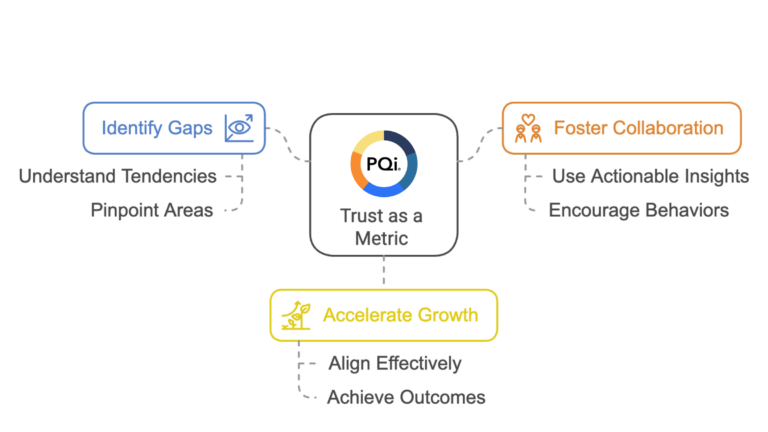In part one of our Partnering Trust series, we uncovered the trust gap—how even solid partnerships can quietly break down when no one’s looking.
Now we’re getting specific.
This next part is all about the operational behaviors that quietly erode trust, often unintentionally. The ones that don’t make it into QBRs, but partners feel them right away. And when trust starts to fade, so does commitment. These aren’t dramatic breakdowns. They’re subtle missteps and missed signals that weaken relationships over time.
Let’s look at five trust-killers many organizations miss—and what you can do differently to keep your partnerships strong.
1. Misaligned Expectations at Onboarding and Beyond
When a partnership begins, enthusiasm can easily overshadow clarity. Many programs focus heavily on onboarding, but fail to maintain expectation alignment beyond the first quarter. Partners need a consistent understanding of deliverables, KPIs, and joint goals—not just a welcome deck.
Gartner reports that over 60% of strategic partner programs fail to meet mutual expectations by the 6-month mark due to a lack of ongoing alignment.
Tip: Build an ‘Expectation Reset’ check-in at the 90-day mark to re-align outcomes, expectations, and resource commitments on both sides. Use consistent language and feedback tools to track shifts in partner sentiment, not just KPIs. This ensures both sides stay aligned as the relationship matures.
2. Communication That’s Consistent, but Content-Free
Some partner teams confuse frequency with effectiveness. Weekly syncs and dashboards don’t build trust unless they share real business insights. Many programs fall into transactional reporting, avoiding the strategic conversations that make a partner feel involved and informed.
McKinsey found that 53% of partners cite ‘surface-level updates’ as a primary frustration in communication, which drives disengagement over time.
Tip: Redesign your partner check-ins to include a forward-looking section covering opportunity roadblocks, feedback, and shared decision-making moments. Even better: pair qualitative insight with a structured trust perception measure to ensure both teams feel heard and valued across conversations.
3. One-way Accountability
Holding partners to targets without holding internal teams accountable for their enablement, support, or responsiveness breaks trust fast. True accountability is mutual. When there’s no two-way communication, partners start looking for more balanced relationships elsewhere.
According to the Channel Marketer Report, partner churn increases by 29% in programs where performance expectations are not mirrored internally.
Tip: Create shared scorecards that track partner outcomes and your internal support delivery, such as response time, enablement quality, and follow-through.
When both sides see their contribution reflected, trust grows. A measurable, repeatable structure can make that visible.
4. Recognition Without Relevance
Trust isn’t built by generic praise. Many vendors offer recognition—badges, emails, leaderboard spots—that feel shallow or misaligned with real impact. Recognition only builds trust when it feels earned, specific, and tied to goals that partners care about.
Salesforce data shows partners who receive personalized recognition based on shared KPIs are 41% more likely to renew annually.
Tip: Make recognition data-driven and relevant. Highlight success tied to co-sell efficiency, customer impact, or enablement completion—not just revenue.
5. No Mechanism to Measure or Course-Correct Trust
Trust is not a vibe, it’s a measurable state. Programs that rely solely on relationship managers’ gut instincts miss early signals. Without structured trust metrics, teams can’t act until partners have disengaged.
Accenture research shows high-trust programs outperform peers by up to 50% in renewal and partner-led revenue growth.
Tip: Use a trust framework like the Partnering Trust Quotient Index (PQi®) to consistently evaluate perception gaps across transparency, enablement, communication, and mutual accountability. It’s not about scoring, it’s about seeing what’s working and where to focus before trust turns into churn.
Trust isn’t built on good intentions but on what partners experience consistently. When misalignment, silence, or one-sided effort go unchecked, even the most promising programs start to slip. But trust erosion isn’t inevitable; it’s invisible until you know where to look.
PQi® gives you a clear view of the health of your partner relationships—before performance or loyalty takes a hit.
See how we help you measure and act on trust →
💡 Next in the Partnering Trust series:
In Part 3, we’ll unpack what it takes to rebuild trust after it’s been shaken—and why AI, communication, and clarity play a role. Stay tuned, and please let us know your thoughts. info@achieveunite.com
If you missed part 1, click here
Take the first step toward exponential growth by embracing the power of trust, collaboration, and strategic partnership planning. Contact us to find out more.
For more insights and resources on partnership strategies, visit AchieveUnite.





